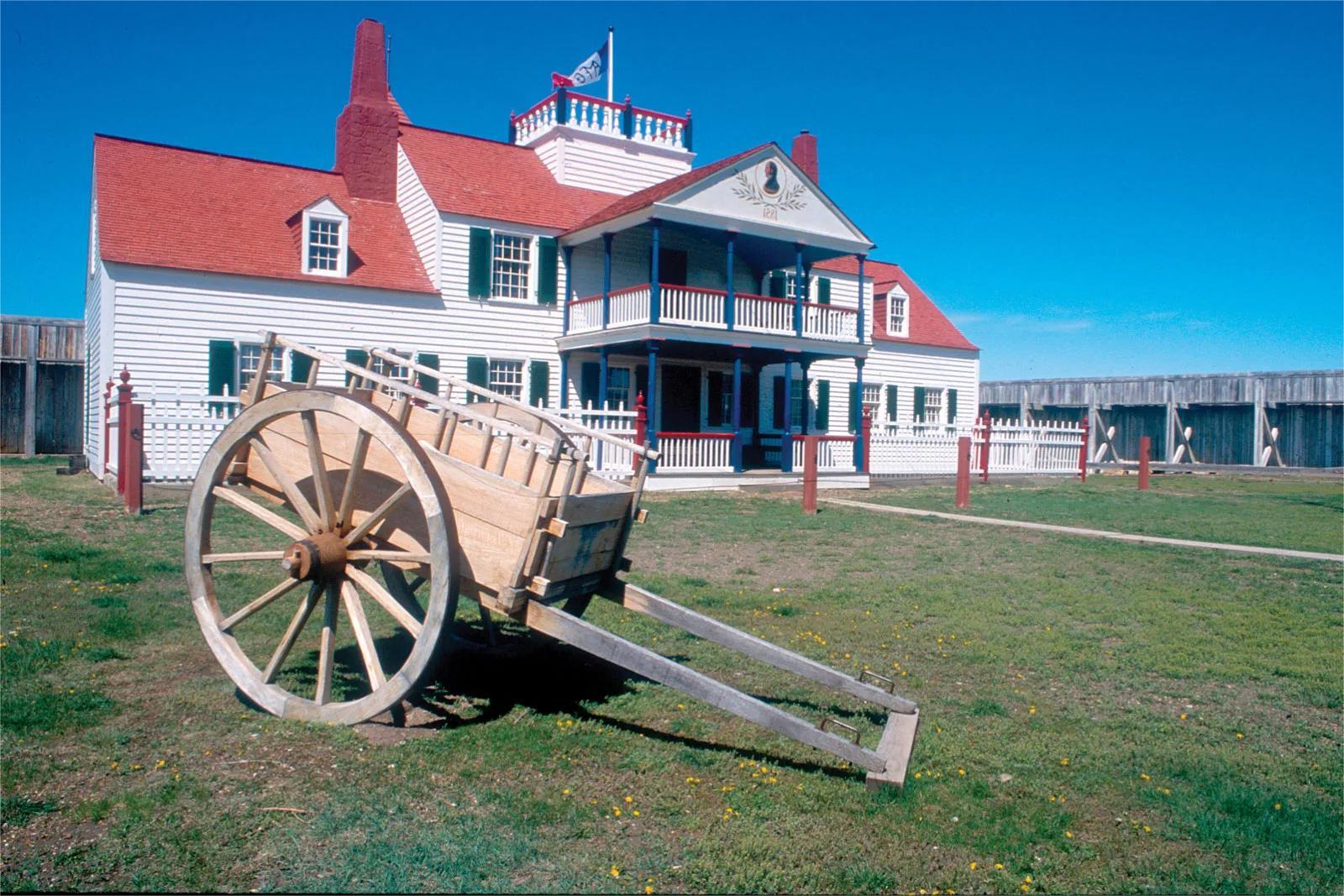Secrets Of North Dakota’s Fort Union Trading Posts

Have you ever wondered what life was like at a trading post in the 1800s? Fort Union Trading Post in North Dakota offers a glimpse into that past. This historic site was a bustling hub where Native Americans, trappers, and traders exchanged goods like furs, beads, and tools. Imagine the lively scenes of bartering, storytelling, and cultural exchange that took place here. Visiting Fort Union today, you can explore reconstructed buildings, watch demonstrations, and even participate in hands-on activities. It's a fantastic way to step back in time and experience a piece of American history. Ready to learn more about this fascinating place? Let's dive in!
Secrets of North Dakota's Fort Union Trading Posts
North Dakota's Fort Union Trading Posts hold a treasure trove of history and culture. These sites offer a glimpse into the past, showcasing the rich heritage of the region. Let's dive into some of the most fascinating spots you can visit.
1. Fort Union Trading Post National Historic Site
Fort Union Trading Post National Historic Site stands as a testament to the fur trade era. This reconstructed fort offers an immersive experience into the 19th century.
- Visitor Center: Start your journey at the Visitor Center. Here, you can find exhibits detailing the history of the fort and its significance in the fur trade.
- Bourgeois House: Explore the Bourgeois House, where the fort's manager lived. It’s filled with period furnishings and artifacts.
- Trade House: Visit the Trade House to see where Native Americans and traders exchanged goods. The displays here bring the bustling trade environment to life.
2. Fort Buford State Historic Site
Fort Buford State Historic Site is another gem. This military post played a crucial role in the Indian Wars and the settlement of the Northern Plains.
- Officers' Quarters: The restored Officers' Quarters provide insight into military life on the frontier.
- Fort Buford Cemetery: Pay respects at the Fort Buford Cemetery, where soldiers and settlers rest.
- Missouri-Yellowstone Confluence Interpretive Center: Just a short drive away, this center offers exhibits on the natural and cultural history of the area.
3. Knife River Indian Villages National Historic Site
Knife River Indian Villages National Historic Site preserves the history of the Northern Plains Indians. This site includes the remains of several Hidatsa villages.
- Earthlodge Village: Walk through the reconstructed Earthlodge Village to see how the Hidatsa people lived.
- Visitor Center Museum: The museum houses artifacts and exhibits on the Hidatsa culture and their interactions with traders.
- Sakakawea Site: Visit the Sakakawea Site, believed to be the birthplace of the famous Shoshone woman who helped Lewis and Clark.
4. Fort Abraham Lincoln State Park
Fort Abraham Lincoln State Park offers a mix of military history and Native American culture. This park is a must-visit for history buffs.
- Custer House: Tour the reconstructed Custer House, home of General George Custer before his fateful expedition.
- On-A-Slant Village: Explore the On-A-Slant Village, a Mandan Indian village with reconstructed earthlodges.
- Infantry Post: Walk through the Infantry Post to see the barracks and other military buildings.
5. Lewis and Clark Interpretive Center
The Lewis and Clark Interpretive Center provides a comprehensive look at the famous expedition and its impact on the region.
- Exhibit Hall: The Exhibit Hall features displays on the journey of Lewis and Clark, including maps, journals, and artifacts.
- Keelboat Replica: Check out the full-size replica of a keelboat used by the expedition.
- Outdoor Trails: Enjoy the outdoor trails that offer scenic views of the Missouri River and interpretive signs about the expedition.
6. Fort Totten State Historic Site
Fort Totten State Historic Site offers a glimpse into the life of a frontier military post and later, an Indian boarding school.
- Original Buildings: Many original buildings still stand, including the hospital, barracks, and officers' quarters.
- Interpretive Center: The Interpretive Center provides exhibits on the fort's history and its later use as a boarding school.
- Walking Tours: Take a self-guided walking tour to explore the site at your own pace.
7. Chateau de Mores State Historic Site
Chateau de Mores State Historic Site tells the story of the Marquis de Mores, a French nobleman who attempted to establish a cattle empire in the Badlands.
- Chateau de Mores: Tour the chateau, a 26-room mansion filled with period furnishings and artifacts.
- Packing Plant Ruins: Visit the ruins of the Marquis' meatpacking plant, a testament to his ambitious plans.
- Interpretive Center: The center offers exhibits on the life and times of the Marquis and his family.
8. Fort Stevenson State Park
Fort Stevenson State Park, named after a 19th-century military fort, offers both history and outdoor recreation.
- Fort Stevenson Guardhouse: The reconstructed guardhouse serves as a museum with exhibits on the fort's history.
- Marina: Enjoy boating and fishing at the park's marina on Lake Sakakawea.
- Camping and Trails: The park offers camping facilities and trails for hiking and biking.
Discovering Fort Union Trading Post
Fort Union Trading Post offers a unique glimpse into North Dakota's rich history. Visiting this site, you can explore the reconstructed fort, learn about the fur trade, and understand the interactions between traders and Native American tribes. The fort's museum and living history demonstrations bring the past to life, making it a memorable experience for all ages.
Whether you're a history buff or just looking for an interesting day trip, Fort Union Trading Post has something to offer. The scenic views of the Missouri River and the surrounding landscape add to the charm of this historic site. Don't forget to check out the visitor center for more information and souvenirs.
Plan your visit to Fort Union Trading Post and step back in time to experience a vital part of America's frontier history. It's a trip worth taking.

